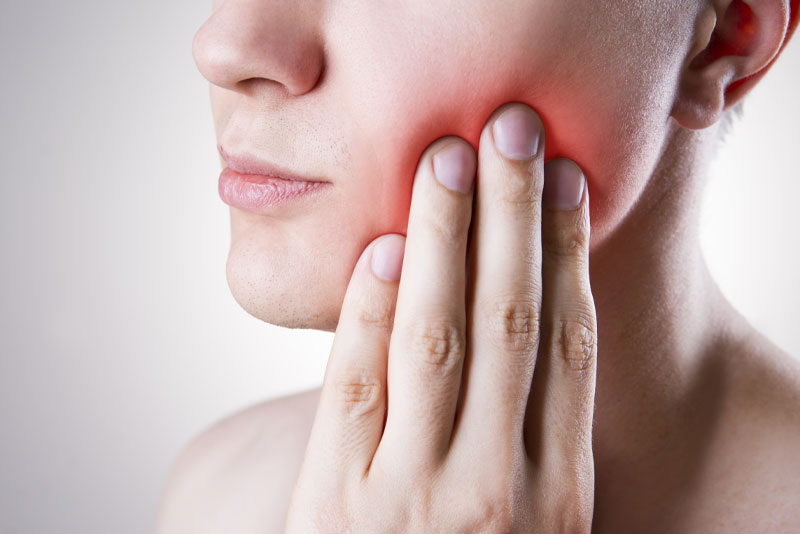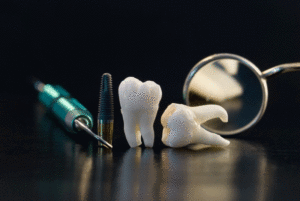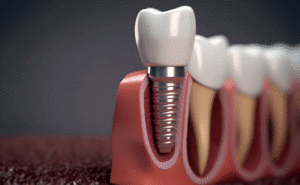Some dental issues have a tendency to mask or disguise their symptoms as other medical problems. For instance, what may seem like a sinus infection or headache could actually be a dental issue and vice versa. The best way to know for sure is to have Dr. Caven take a look so a proper diagnosis can be made through close examination and process of elimination.
Temporomandibular Joint Disorders
An area that can be potentially difficult or tricky to diagnose are problems associated with the temporomandibular joints otherwise known as the TMJ. The TMJ is the connecting hinge that joins the lower jaw (the mandible) to the temporal skull bone. It can involve the surrounding bone, tissue, disks and muscle groups that together control chewing, talking, and yawning. Problems associated with this area are collectively known as TMJ Disorders (TMD).
Women are eight times more likely than men to experience TMD because they don’t have the same strength in their structural anatomy to self-correct problems as do most men. The disorder is progressive and should be treated at the earliest opportunity after the onset of symptoms.
Causes and Symptoms of TMD
When they’re not working properly, TMJ problems can express themselves in a number of ways, pain and discomfort chief among them. Though it can obviously originate at the source, not all pain associated with TMD is concentrated solely in the affected jaw joint area. TMD-related pain can also manifest itself as facial or cheek soreness, as an earache, through the onset of recurring headaches that settle primarily in the temples, or as stiffness or pain in the neck and shoulders as well as tooth pain.
Popping, sticking, creaking, or other similar, unusual sensations, particularly when making pronounced or exaggerated movements, or simply not being able to open and close the mouth fully, are often associated with TMD. The inability to move the lower jaw from side to side or a misaligned bite can also signal trouble, as can persistent buzzing or ringing in the ears.
TMD is often associated with excessive clenching and grinding, which usually occurs during sleep and can go undetected; specific trauma to the head and neck, such as whiplash; arthritis; and stress-related tightening and clenching of the teeth as well as obstructive sleep apnea.
Diagnosis
To ensure a proper diagnosis, an initial screening of the muscle, bone and disk placement and bite function should be made, which may or may not require current panoramic x-rays or other imaging, such as magnetic resonance imaging (MRI) or computer tomography (CT) Scan. If you’re a new or returning patient, Dr. Caven will also need an updated health history to rule out other underlying medical issues and discuss any previous facial trauma.
Treatment
Dr. Caven has invested thousands of hours in continuing education courses that encompass TMJ diagnosis and is current on the latest treatment protocols.
Because undue stress has been placed on the joints, the first order of concern is to provide rest and relief to the affected area(s). This can sometimes be accomplished by simply incorporating softer foods into the diet, eliminating gum chewing, application of hot and/or cold packs, or even with certain prescription medications and relaxation techniques.
One commonly prescribed aid that is effective in the treatment of TMD is a specially designed, custom-fitted bite guard. Made of specialized acrylic, the appliance fits over the teeth and is usually worn at night, when grinding is most common and usually goes unnoticed. It serves to prevent further grinding by keeping the teeth apart, while stabilizing the joints, redistributing associated stress on the TMJ and supporting muscles, and retraining dysfunctional movements.
More pronounced cases may require more involved treatment, like low-level transcutaneous electrical nerve stimulation (TENS) electrotherapy, trigger-point injections, soreness-offsetting ultrasound, and radio wave therapy to increase blood flow. Surgery is often considered a last option but Dr. Caven works closely with the nation’s leading surgeon, Dr. Mark Piper (www.TMJsurgery.com) and has many patients achieve life-altering results.
Sound Familiar?
If you have experienced any of the TMD warning signals, schedule an appointment and let Dr. Caven render an informed diagnosis and personalized treatment plan.



